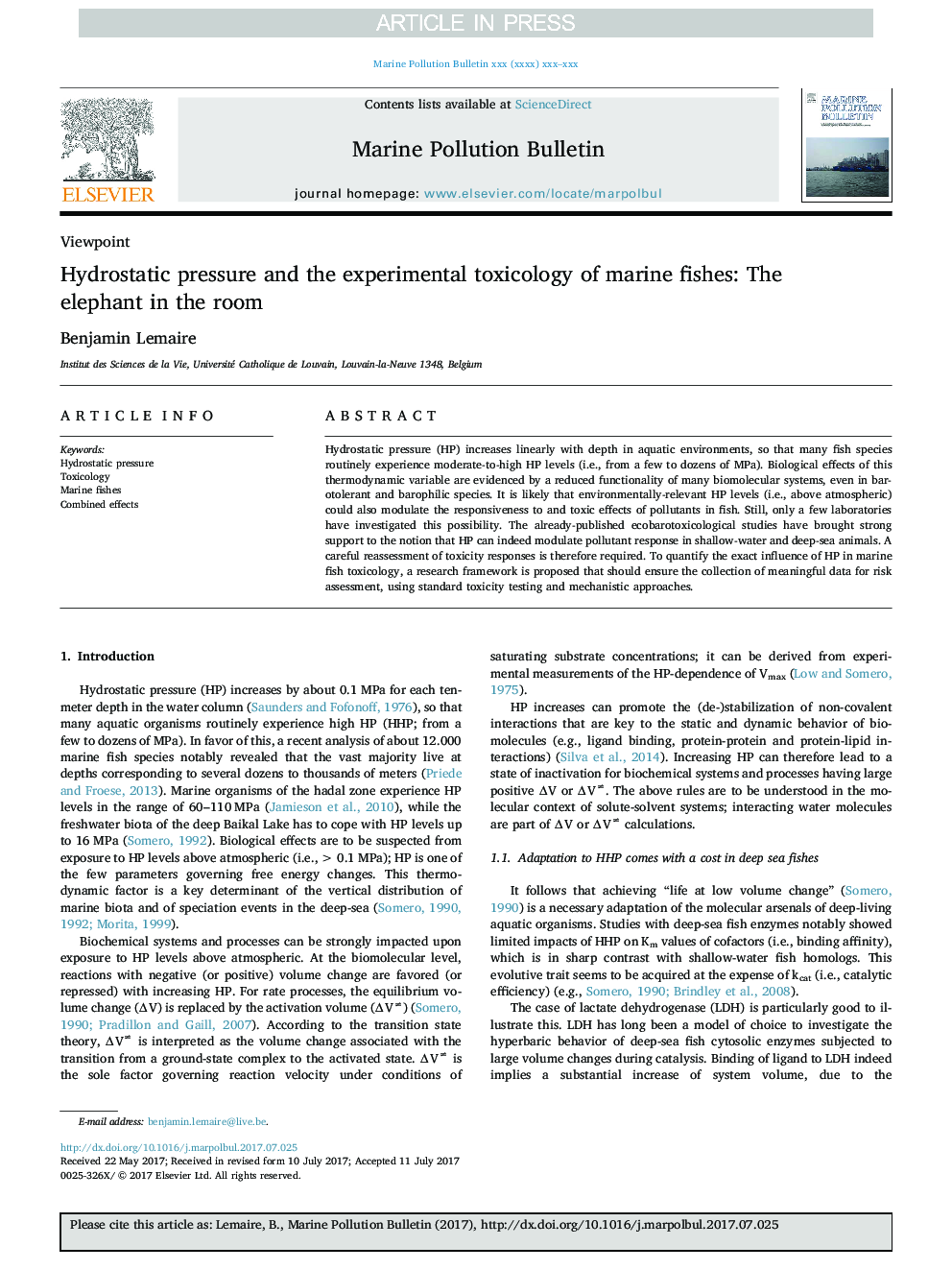| Article ID | Journal | Published Year | Pages | File Type |
|---|---|---|---|---|
| 8872210 | Marine Pollution Bulletin | 2017 | 5 Pages |
Abstract
Hydrostatic pressure (HP) increases linearly with depth in aquatic environments, so that many fish species routinely experience moderate-to-high HP levels (i.e., from a few to dozens of MPa). Biological effects of this thermodynamic variable are evidenced by a reduced functionality of many biomolecular systems, even in barotolerant and barophilic species. It is likely that environmentally-relevant HP levels (i.e., above atmospheric) could also modulate the responsiveness to and toxic effects of pollutants in fish. Still, only a few laboratories have investigated this possibility. The already-published ecobarotoxicological studies have brought strong support to the notion that HP can indeed modulate pollutant response in shallow-water and deep-sea animals. A careful reassessment of toxicity responses is therefore required. To quantify the exact influence of HP in marine fish toxicology, a research framework is proposed that should ensure the collection of meaningful data for risk assessment, using standard toxicity testing and mechanistic approaches.
Related Topics
Physical Sciences and Engineering
Earth and Planetary Sciences
Oceanography
Authors
Benjamin Lemaire,
